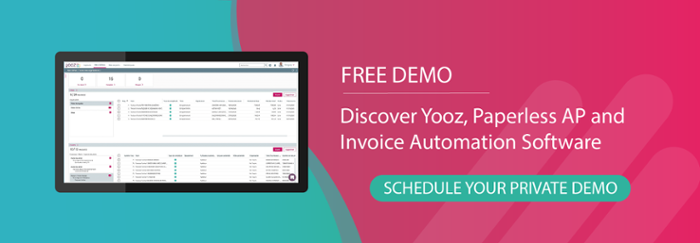The concept of automating accounts payable processes first surfaced about twenty years ago. Invoices have the specificity of being documents with a variable structure. Even if the information is identical, the placement differs from one vendor to another, which makes its analysis more complex. Former solutions had nothing to do with current approaches, especially in terms of performance and reliability. They did, however, have the same objective: automate a tedious and repetitive process to make AP personnels lives easier and optimize the efficiency of finance processes.
Before Artificial Intelligence in Accounting, teams manually created and processed invoices, purchase orders or delivery orders on paper documents. Those documents were then manually entered in computer systems, coded, and finally transmitted to the managers for approval and payment.
The introduction of AI in accounting
Today, with the introduction of AI, there are no more manual processes. The AP workflow process is automated by AP automation software which analyzes, recognizes, directs, and exports data into a company’s ERP/ financial system.
Before automating the AP workflow, suppliers had little to no insight into payment timing details; now, they have full access to this information in real time. Accounts payable (AP) automation has been in existence for decades, but it has only recently become widely accessible to all sizes of firms, rather than only to enterprise level firms.
This is attributed to two factors:
- Intelligent AP automation solutions have adopted business models that are now accessible to the small and mid-sized markets.
- They more and more efficiently meet the challenges of cost reduction, fluidity, and secure processes.
The combination of the two have permitted the use of these technologies in all companies and prevented the exclusive use in enterprise companies that process millions of documents each year.
The phenomenon of maturity, reliability and industrialization of these solutions can also be easily explained:
- Algorithms have become more and more reliable, flexible, and adaptable, permitting solutions to automatically manage documents with variable structure, such as invoices. As a result, data is automatically recognized in an exhaustive and reliable way, with no prior configuration.
- SaaS (software-as-a-service) cloud solutions are available to millions of users, which results in constant technological enhancements. This contrasts to older on-premise solutions that limited usage.
The self-learning—machine learning—capabilities of cloud-based software solutions are constantly improving. These solutions essentially “learn” from their mistakes and do not make them again once humans correct them. Computing power is strong and very accessible, driven by AI.
The affordability and wide availability of cloud-based SaaS solutions are driving adoption and general usage and acceptance of these types of solutions. Indeed, SaaS solutions are spreading so widely because they have a significant economic interest for business managers. Most solutions are based on pay-per-usage pricing. Users subscribe and do not need to invest additional time and money to implement the solutions, as is the case of enterprise-level onpremise solutions.
- Pay-per-usage pricing: SaaS solutions are generally presented as services and their price depends on the volume of documents processed. This characteristic represents an intriguing opportunity for widespread adoption of small and medium-size companies.
- IT investment costs reduced to zero: Cloud-based solutions are immediately operational and do not need any purchase of supplies, software, or installation (as opposed to on-premise). As a result, the total cost of software ownership is radically reduced.
If we go beyond these pure economic elements, agility, accessibility, and ease of configuration drive adoption as well:
- Users have access to their solutions from any device (computer, tablet, smartphone), anywhere and anytime.
- They get a quick operational solution, with an easy configuration and with no need to install anything.
- As solutions are accessed via web browsers, the experience is user-friendly and increases user commitment.

.jpg)






